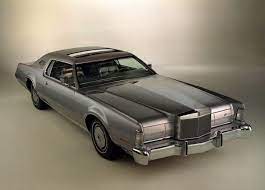Cadillac was the first to offer a solid metal roof on an automobile all the way back in the late-1920s with its “turret top” design. Not long after that, the Pytchley Sliding Roof was patented, which was a sliding roof mechanism covering that opened up the outside world to encased-in-metal occupants.
However, Ford coined the term moonroof in 1973 with the Lincoln Continental Mark IV. Since then, people have largely used that and the term sunroof pretty interchangeably, and now most people freely wield them around without knowing what actually separates the two.
Depending on who you ask, some folks even hold very aggressive opinions about which is the proper term. If they happen to berate you for your alleged misuse, over the internet or in person, promptly and politely inform them that they should go outside more. Maybe get some better hobbies.
Moonroof: a glass version of the former, which enables occupants to at least see light through, whether tinted or not, when closed. If we go with these definitions, most modern cars actually have moonroofs because nearly all of them have a glass panel.
It’s really that simple, though there are some varieties of these that ought to be touched on.
For those familiar with the classification of living organisms, moonroofs and sunroofs are a part of the same family (rooftop methods of enjoying the outside world), they’re in separate genuses, and then there are various species (or, I guess versions) of each. I’m talking about t-tops, wicked-rad retractable t-tops, that wild electrochromic technology McLaren puts in their supercars, retractable canvas tops, glass moonroofs with sunshades that never fully cut out natural light, and more.
Source : https://www.popsci.com/cars/sunroof-moonroof-difference/









